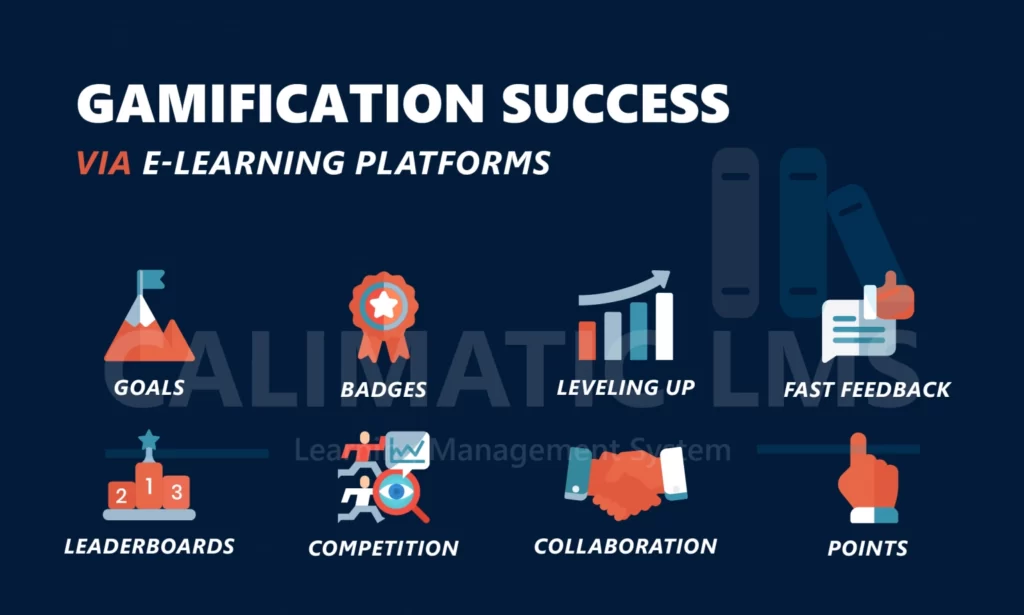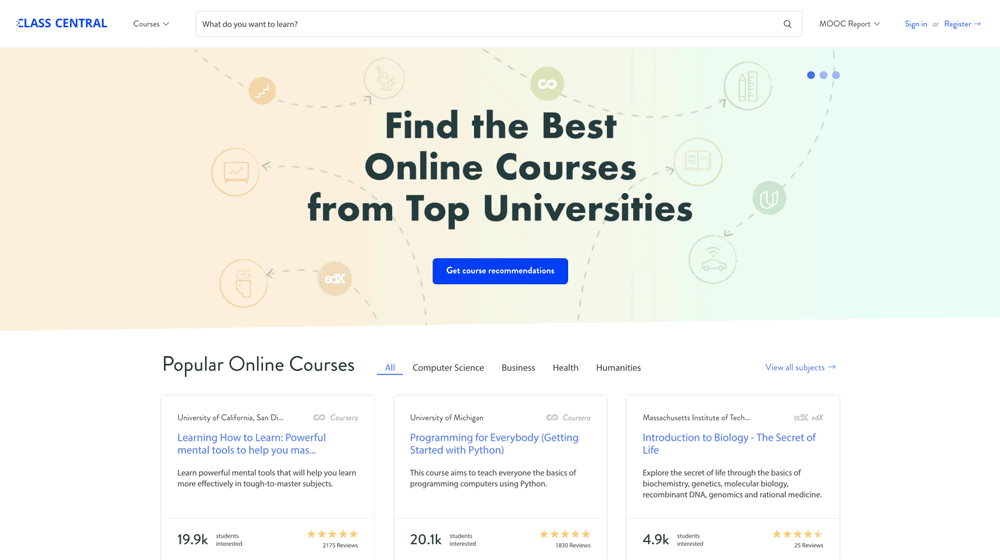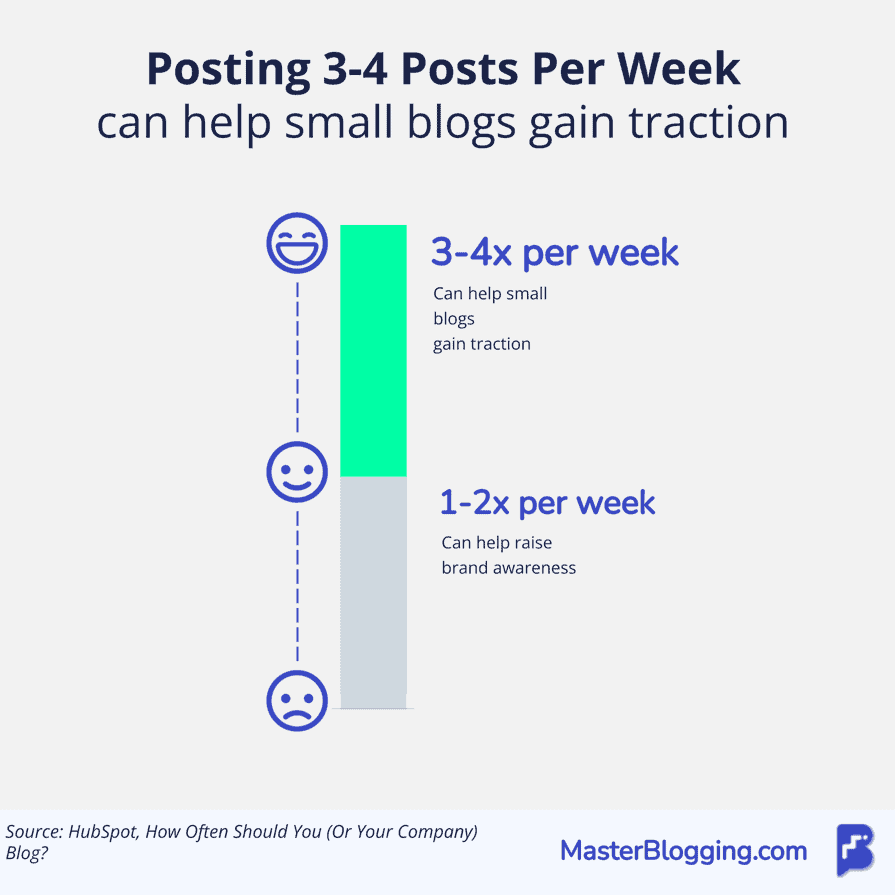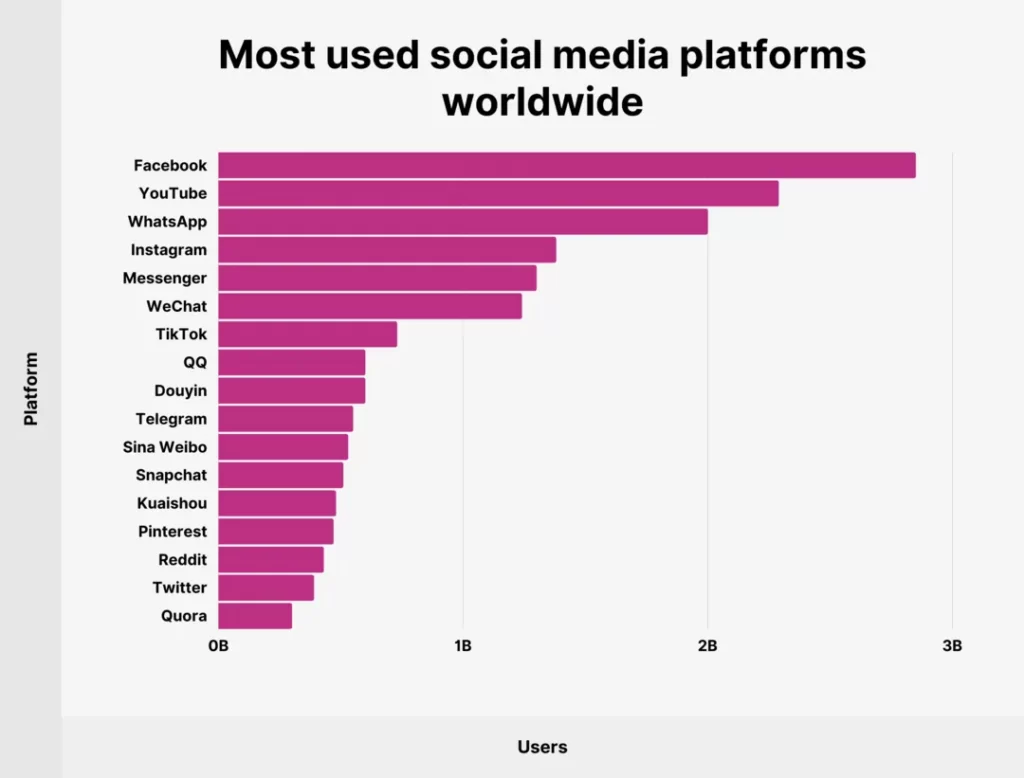How to Promote Your Online Course for Maximum Success
You've put countless hours into creating your online course. You've filled it with insights, expertise, and real-world solutions. You've polished every slide and rehearsed each webinar. Now, it's time for the world to see your masterpiece. But then, the question arises: How do you get your course in front of the right people? How do you persuade them to click that ‘buy' button?
Welcome to the exhilarating challenge of marketing your online course! A challenge faced by many in our increasingly digital age. As of 2023, the global e-learning market was valued at a staggering $200 billion, and experts predict this will increase to over $600 billion by 2030. Despite this flourishing market, many online courses fail to achieve their full potential—not due to a lack of quality or value, but because they're lost in the vast digital landscape, unnoticed by those who would benefit most.
This article will delve deep into the art and science of promoting your online course for maximum success. We'll explore the top industry players' strategies, uncover the latest marketing trends, and guide you on positioning your course to reach and resonate with your target audience. It's time to turn your online course from the internet's best-kept secret into a thriving business success story. Let's get started.
Table of Contents
Know Your Target Audience
Before diving headfirst into your promotional efforts, it's crucial to have a deep understanding of your target audience. Identifying your ideal learners will allow you to tailor your marketing strategies and create content that truly resonates with them.
1.1 Define Your Target Audience

To embark on a successful journey of designing and marketing your learning program, it is imperative, to begin with comprehensive market research. By delving into the depths of this process, you will gather valuable insights into your potential learners' demographics, interests, and pain points. This crucial information will empower you to create a targeted and effective strategy.
The first step in your market research endeavour is identifying and understanding your target audience. Who are these learners that you aim to reach? What makes them unique? By examining their characteristics, such as age, gender, educational background, and professional experience, you can better understand their specific needs and preferences.
Digging deeper, it is essential to uncover what motivates your potential learners. What drives them to seek out educational opportunities? Are they driven by career advancement, personal growth, or a desire for new skills? Understanding their underlying motivations will enable you to craft compelling messaging and offers that resonate with their aspirations and goals.
Equally important is identifying the challenges and pain points your target audience faces. What obstacles do they encounter in their educational journey? Are there common roadblocks or barriers hindering their progress? By empathising with their struggles, you can tailor your learning program to address these pain points directly, offering solutions that will capture their attention and provide tangible benefits.
Once armed with this comprehensive understanding of your target audience, you can define your ideal learner profile. This profile serves as a detailed representation of the individuals you aim to engage with, including their characteristics, motivations, and challenges. With this clarity, you can refine your learning program, shaping it to meet the specific needs of your target audience and ensure its relevancy.
Furthermore, the insights gained from your market research will inform your marketing decisions. With a thorough understanding of your potential learners, you can identify the most effective marketing channels and platforms to reach them. Whether through social media, email campaigns, online advertisements, or partnerships with relevant organisations, your strategy will be tailored to maximise visibility and engagement.
1.2 Conduct Competitive Analysis
Studying and analysing other classes within your niche is crucial to establishing a competitive advantage for your online course. By examining your competitors' offerings, marketing tactics, pricing strategies, and customer feedback, you can gain valuable insights that will enable you to position your course uniquely and identify untapped opportunities.
Start by identifying your direct competitors in the online course market. Explore their websites, course descriptions, and promotional materials to understand their offerings comprehensively. Please pay close attention to the topics covered, the teaching methods employed, and the overall learning experience they provide to their students.
Simultaneously, delve into their marketing strategies. Examine how they communicate the value of their courses, the channels they utilise for promotion, and the messaging they use to attract potential learners. By analysing their marketing efforts, you can identify effective techniques that resonate with your target audience and discover areas where you can differentiate yourself.
Another vital aspect to consider is pricing. Investigate your competitors' pricing models, such as one-time payments, subscription-based options, or tiered pricing structures. Assess the perceived value they provide at various price points and evaluate how it aligns with your course's value proposition. This analysis will help you determine a competitive pricing strategy that maximises the perceived value of your course while remaining appealing to prospective learners.
Furthermore, pay attention to customer feedback and reviews of your competitors' courses. This feedback can be found on their websites, social media platforms, or online learning communities. Understand what aspects of their courses are highly praised and what areas need improvement according to their learners. This knowledge will enable you to enhance your course content, delivery, and student experience based on the successes and shortcomings of others.
As you gather insights from your competitors, strive to identify gaps and opportunities within the market. Look for topics or skills in high demand but not adequately addressed by existing courses. By identifying these gaps, you can tailor your course to meet the specific needs of your target audience and position yourself as a unique and valuable offering in the market.
Craft an Irresistible Course Offer
With countless online courses available, making your course stand out and enticing learners to choose yours is essential. Here's how you can create an irresistible course offer:
2.1 Define Your Unique Selling Proposition (USP)

At our core, we strive to offer a course that stands out. What sets us apart is our unwavering commitment to providing a unique learning experience that surpasses the expectations of our learners. Our course's Unique Selling Proposition (USP) lies in its ability to deliver exceptional value and tangible benefits to those who enrol, empowering them to achieve their goals and succeed in their respective fields.
One of the key elements that sets us apart is our cutting-edge curriculum. We have meticulously designed our course content to be comprehensive, up-to-date, and highly relevant to the demands of today's fast-paced world. We ensure our learners receive the most current and practical knowledge by incorporating industry insights and emerging trends. This forward-thinking approach equips them with the necessary tools to thrive in their chosen endeavours.
Furthermore, our course goes beyond theory and actively encourages hands-on, experiential learning. We understand that knowledge with practical application is complete, so we have integrated practical exercises, case studies, and real-world simulations into our curriculum. This dynamic approach enables learners to bridge the gap between theory and practice, honing their skills and fostering a deeper understanding of the subject matter.
Regarding benefits, we are proud to offer many advantages that resonate with our learners. Firstly, our course provides a supportive and engaging learning environment, fostering a sense of community among participants. We believe in the power of collaboration and networking, so we facilitate opportunities for learners to connect, exchange ideas, and learn from each other's experiences. This peer-to-peer interaction enhances learning and expands professional networks, creating lasting connections beyond the course.
Another significant benefit lies in the personalised attention our learners receive. We understand that everyone has unique goals and aspirations, so we offer individualised guidance and mentorship throughout the course. Our experienced instructors and industry experts can provide personalised feedback, answer questions, and offer valuable insights tailored to each learner's needs. This personalised approach ensures that every participant feels supported, motivated, and empowered to maximise their learning potential.
Lastly, our commitment to lifelong learning sets us apart. Enrolling in our course is just the beginning of a lifelong journey of growth and development. We offer post-course resources, such as access to an extensive library of learning materials, webinars, and exclusive events, enabling our learners to stay updated, continue expanding their knowledge, and remain at the forefront of their fields.
2.2 Develop High-Quality Course Content

The success of your online course hinges on the calibre of your course content. Crafting high-quality material that captivates and educates your learners is crucial. Developing engaging, informative, and well-structured content that resonates with your learners' objectives and requirements is essential to achieve this. By incorporating various instructional elements, such as videos, quizzes, resources, and real-life examples, you can elevate the learning experience to new heights.
First and foremost, make your content engaging. Create a dynamic learning environment that sparks curiosity and encourages active participation. Engaging content should stimulate your learners' interest and motivate them to delve deeper into the subject matter. You can achieve this by incorporating visually appealing videos that present concepts in an interactive and visually stimulating manner. These videos can feature engaging visuals, animations, and real-life demonstrations, capturing your learners' attention and making complex topics more accessible and relatable.
In addition to videos, interactive quizzes can play a vital role in your course content. These quizzes serve as valuable assessment tools while promoting active learning. Integrating quizzes at strategic points throughout your course allows learners to test their understanding and reinforce their knowledge. Incorporate different question formats, such as multiple-choice, fill-in-the-blanks, or interactive scenarios, to cater to various learning preferences and maintain interest.
To complement your instructional videos and quizzes, offer downloadable resources that enhance the learning experience. These resources could include e-books, worksheets, checklists, or cheat sheets that learners can reference after completing the course. These materials serve as valuable references and study aids, providing learners with tangible takeaways that consolidate their learning.
Furthermore, real-life examples bring context and practicality to your course content. They demonstrate how the concepts and theories learned in the course apply to real-world scenarios, making the content more relevant and relatable. Integrate case studies, success stories, or simulations that showcase how the knowledge gained can be applied in practical situations. By presenting these examples, learners gain a deeper understanding of the subject matter and can bridge the gap between theory and practice.
Remember, a well-structured course is critical to facilitating effective learning. Organise your content logically and sequentially, ensuring a smooth flow of information. Use clear headings, subheadings, and bullet points to aid comprehension and make it easier for learners to navigate the material. Additionally, provide a clear roadmap or syllabus at the beginning of the course to give learners a sense of what to expect and help them plan their learning journey.
2.3 Offer Certifications and Gamification

Providing participants with certificates of completion or industry-recognised certifications is highly recommended to enhance learner motivation and establish a strong sense of credibility. These valuable credentials serve as tangible proof of their accomplishments and inspire learners to share their newfound skills and knowledge with others proudly. By offering such recognition, you create a culture of achievement and encourage individuals to strive for excellence.
Moreover, incorporating gamification elements into the learning experience can significantly boost engagement and foster healthy competition among participants. Badges, for instance, serve as visual representations of specific milestones or achievements that learners unlock as they progress through the course. These digital accolades not only provide a sense of accomplishment but also act as a motivator, spurring learners to conquer new challenges and earn more badges.
Leaderboards are another effective gamification tool that fuels healthy competition and encourages learners to participate and excel actively. By showcasing the progress and achievements of participants, leaderboards create a sense of friendly rivalry, pushing individuals to push their limits and strive for higher rankings. This competitive element can drive learners to invest more effort in learning, ultimately leading to better outcomes.
To further incentivise engagement, rewards can be introduced to recognise and celebrate learners' accomplishments. These rewards can take various forms, such as virtual currency, bonus content, or exclusive access to advanced learning materials. By offering meaningful incentives, learners are motivated to actively participate, complete tasks, and strive for excellence, creating a positive feedback loop that fuels their continued engagement.
Incorporating these elements into the learning experience not only enhances motivation but also contributes to the overall credibility and value of the program. Certificates of completion and industry-recognised certifications validate the skills and knowledge acquired by learners, bolstering their professional profiles and making them more attractive to employers or clients. Meanwhile, the gamification elements inject fun and excitement into the learning journey, transforming it into a dynamic and interactive experience.
Optimise Your Course Website for Conversions
Your course website serves as the primary touchpoint for potential learners, making it crucial to optimise it for conversions. By implementing the right strategies, you can maximise enrollment rates and convert visitors into paying students.
3.1 Create a User-Friendly Website

Creating an exceptional online experience for your website visitors is paramount to cultivating a loyal user base and converting them into paying customers. To achieve this, it is essential to prioritise user-friendliness and seamless navigation throughout your website. By optimising key aspects such as navigation structure, page load speed, and overall design, you can significantly enhance the overall user experience.
Start by ensuring your website's navigation structure is intuitive and easily comprehended. Visitors should be able to locate desired information effortlessly, finding their way around your website with minimal confusion. Implement a clear and organised menu system that logically categorises your content, enabling users to navigate through different sections efficiently. Additionally, consider incorporating search functionality to allow visitors to find specific information or courses they are interested in quickly.
Page load speed is another crucial factor in creating a positive user experience. Slow-loading pages can quickly frustrate visitors, leading them to abandon your website and seek alternatives. Optimise your website's performance by minimising file sizes, leveraging caching techniques, and utilising content delivery networks (CDNs) to ensure that your pages load swiftly across various devices and network connections. Remember, a fast-loading website enhances user satisfaction and positively impacts search engine rankings.
Investing in a visually appealing and aesthetically pleasing website design is equally important. Your website should reflect professionalism, credibility, and a sense of trustworthiness to instil confidence in potential students. Utilise a visually coherent colour scheme, select appropriate fonts, and employ consistent branding elements throughout your website. Strive for a clean, clutter-free layout that guides visitors' attention towards important content and calls to action.
In addition to these technical considerations, providing high-quality and engaging content is crucial. Ensure your present information is concise, informative, and relevant to your target audience. Incorporate multimedia elements like images and videos to enhance your website's visual appeal and interactivity. Moreover, consider implementing interactive features like quizzes, forums, or live chat support to actively engage visitors and provide them with valuable opportunities for interaction.
3.2 Craft Compelling Landing Pages

Creating dedicated landing pages for each course, you offer is a powerful strategy to attract and engage potential students. By focusing on each course's unique benefits and key selling points, you can effectively communicate the value they bring to learners. Here's how you can revamp your landing page design and optimise its content to drive enrollment:
- Captivating Headline: Craft a compelling headline that grabs visitors' attention and instantly communicates the value proposition of your course. It should succinctly convey the benefits and outcomes learners can expect to achieve.
Example: “Master the Art of Digital Marketing and Skyrocket Your Career!
- Persuasive Copy: Use persuasive language to highlight your course's features, advantages, and transformational aspects. Clearly explain how it addresses the pain points of potential students and offers them a solution. Emphasise the unique selling points that differentiate your course from competitors.
Example: “Our comprehensive digital marketing course equips you with the latest strategies and tools to dominate the online world. Learn from industry experts, gain hands-on experience, and unlock limitless career opportunities in the digital realm.”
- Compelling Visuals: Incorporate captivating images or videos that showcase previous students' learning environment, instructors, or success stories. Visual content can evoke emotions and create a sense of trust, making your course more enticing and credible.
Example: Include a video testimonial from a successful graduate, demonstrating how your course helped them achieve their goals and showcasing their tangible results.
- Benefits and Outcomes: Clearly outline the benefits and outcomes learners can expect from your course. Highlight the skills they will acquire, the knowledge they will gain, and how it will positively impact their personal or professional life. Use bullet points or concise paragraphs to present this information in a scannable format.
Example: “By enrolling in our digital marketing course, you will:
- Master the art of SEO, social media marketing, and content creation.
- Develop a data-driven mindset to optimise campaigns and increase ROI.
- Gain practical experience through real-world projects and case studies.
- Receive a globally recognised certification to boost your career prospects.”
- Call-to-Action (CTA) Buttons: Place clear and compelling call-to-action buttons strategically throughout the landing page. Use action-oriented phrases such as “Enroll Now,” “Start Your Journey,” or “Unlock Your Potential.” Ensure these buttons stand out visually and lead visitors to a seamless enrollment process.
Example: “Ready to take your digital marketing skills to the next level? Enrol now and secure your spot!”
- User-Friendly Navigation: Make it easy for visitors to navigate your landing page and find the necessary information. Use a logical page structure with clear headings, subheadings, and sections. Include an intuitive menu or anchor links to enable quick access to different parts of the page.
- Social Proof: Include satisfied students' testimonials, reviews, or success stories to build credibility and trust. Showcasing positive experiences and outcomes can alleviate potential learners' doubts or concerns.
Example: “Read what our students have to say about their experience with our digital marketing course:”
- Clear Next Steps: Guide visitors on what they must do before enrolling in your course. Provide a step-by-step enrollment process breakdown, including prerequisites, application deadlines, or payment options. Make it effortless for potential students to take the desired action.
Example: “To secure your spot in our digital marketing course, follow these simple steps:
- Fill out the online application form.
- Complete the payment process securely.
- Receive instant access to the course materials and start learning!”
By implementing these strategies, you can create impactful landing pages that effectively communicate the unique benefits of your courses, engage visitors, and motivate them to take the next step towards enrollment.
3.3 Implement Conversion Optimisation Techniques

To significantly enhance your conversion rates and establish a strong connection with your target audience, it's imperative to integrate various social proof elements into your marketing strategy. By incorporating testimonials, case studies, and success stories, you foster trust among potential customers and showcase the tangible value of your course or product. Let's explore these strategies more detail and discover additional techniques to boost conversions effectively.
- Testimonials: Testimonials serve as powerful endorsements that validate the credibility and effectiveness of your course. Collect testimonials from satisfied customers who have experienced positive results or benefited from your offerings. Highlight specific details such as their achievements, transformational experiences, or specific skills they acquired through your course. Incorporate these testimonials strategically throughout your marketing materials, landing pages, and sales pages to build trust and inspire confidence in prospective customers.
- Case Studies: Case studies provide in-depth analyses of how your course has positively impacted individuals or businesses. By showcasing real-life examples and the measurable outcomes achieved by your students or clients, you can demonstrate the practicality and applicability of your course. Outline the initial challenges, the steps to overcome them, and the remarkable results. Presenting these case studies as engaging narratives can help potential customers envision their success and encourage them to act.
- Success Stories: Similar to testimonials and case studies, success stories showcase the accomplishments of your customers after completing your course. These stories can be presented in various formats, such as written narratives, videos, or podcasts. Highlight the personal journeys of your customers, emphasising the obstacles they encountered, the knowledge gained, and the positive impact your course had on their lives. By sharing relatable success stories, you create a sense of possibility and motivation, compelling potential customers to invest in your class.
- Lead Capture Forms: Incorporate lead capture forms strategically across your website and landing pages. These forms allow you to collect valuable contact information, particularly email addresses, from interested visitors. By capturing these details, you can establish a direct line of communication with potential leads and nurture them through targeted email marketing campaigns. Offer incentives, such as exclusive content or access to a community, in exchange for their contact information. This approach encourages visitors to take action and increases the likelihood of converting them into paying customers.
- Free Content Upgrades: Provide additional value to your audience by offering free content upgrades, such as e-books, guides, or mini-courses. These resources complement your main course and provide actionable insights or supplementary knowledge. By offering valuable content for free, you establish yourself as an authority in your field, building trust and credibility with your audience. Ensure that the content upgrades are relevant, high-quality, and address the pain points of your target audience. This approach helps capture email addresses and nurtures leads by demonstrating your expertise and fostering a sense of reciprocity.
Leverage Content Marketing Strategies
Content marketing is a powerful tool for promoting your online course, establishing thought leadership, and attracting organic traffic. You can build trust, showcase your expertise, and position yourself as a go-to resource by providing valuable and relevant content to your audience.
4.1 Start a Blog

Incorporating a blog into your course website opens up many opportunities for regularly publishing engaging and informative articles around your course topic. Doing so allows you to effortlessly share invaluable insights, practical tips, and up-to-date industry trends tailored to provide immense value to your target audience. A well-crafted blog strengthens your online presence and establishes you as a thought leader in your field.
One of the critical advantages of maintaining a blog on your course website is the ability to optimise your blog posts with strategically chosen keywords. You can significantly enhance your blog's visibility in search engine results by conducting thorough keyword research and incorporating these relevant terms into your articles. This optimisation empowers you to attract organic traffic to your website, reaching a broader audience and generating increased interest in your course offerings.
You can connect strongly with your readers through your blog by consistently delivering valuable content. By sharing your expertise, addressing common pain points, and providing practical solutions, you create a sense of trust and credibility among your audience. This fosters a loyal community of learners who see you as a reliable source of information, eagerly anticipating your future blog posts.
Furthermore, a blog enables you to foster engagement with your readers through comments, feedback, and discussions. Encouraging interaction on your blog posts allows you to understand your audience's needs better and will enable them to share their thoughts, ask questions, and seek clarification. Participating actively in these discussions creates a vibrant learning environment that nurtures community and collaboration.
Additionally, a blog can serve as a platform to showcase your expertise and attract potential students to enrol in your course. You demonstrate your knowledge, skills, and passion for the subject by consistently delivering high-quality content. This helps build your reputation as an authority figure and enhances your course's credibility, enticing prospective students to choose your educational offerings over others.
Expanding your blog's reach can be achieved by integrating social media platforms. Promoting your blog posts on various social media channels can amplify their visibility and extend their reach to a broader audience. Sharing captivating snippets, eye-catching visuals, and thought-provoking quotes from your articles entices readers to visit your blog and explore your wealth of knowledge. Social media also facilitates sharing capabilities, enabling your audience to quickly spread the word about your blog and attract more potential learners to your website.
- Audible Audiobook
- Joe Pulizzi (Author) – Joe Pulizzi (Narrator)
- English (Publication Language)
- 12/20/2013 (Publication Date) – Elephant Audiobooks (Publisher)
4.2 Produce Engaging Videos
Video content has become a powerful tool for engaging audiences and establishing meaningful connections. Whether you're a business, an educator, or a content creator, harnessing the potential of video can significantly enhance your ability to communicate and deliver value to your target audience. By developing educational videos, tutorials, or teasers, you can captivate your viewers and provide them with valuable insights, information, and entertainment.
When it comes to video content, the possibilities are vast. You can create educational videos that explain complex concepts in a visually appealing and easily understandable manner. These videos can help your audience learn new skills, acquire knowledge, or gain a deeper understanding of a subject. By offering educational content, you position yourself as an authority in your field and build trust with your viewers.
In addition to educational videos, tutorials are another excellent way to connect with your audience. By guiding your viewers step-by-step through a specific process or demonstrating how to use a product effectively, you empower them to achieve their goals and overcome challenges. Tutorials allow you to showcase your expertise, establish yourself as a reliable resource, and foster a sense of community among your audience.
Teasers are short and captivating snippets that leave your viewers wanting more. They serve as powerful promotional tools, providing a glimpse into what your content or product has to offer. Crafting enticing teasers creates anticipation and generates curiosity, compelling your audience to explore the full video.
Once you've created your video content, it's crucial to optimise its reach by publishing it on platforms like YouTube. With its massive user base and powerful search capabilities, YouTube offers an ideal platform for showcasing your videos to a broader audience. To maximise the visibility of your videos, it's essential to employ effective optimisation strategies.
First and foremost, conduct keyword research to identify the most relevant and popular search terms related to your video content. Incorporating these keywords naturally into your video title, description, and tags increases the chances of your videos appearing in search results. This helps you attract viewers actively seeking the kind of content you offer.
Additionally, captivating thumbnails are crucial in enticing viewers to click on your videos. Create visually appealing thumbnails that accurately represent your video's essence while piquing curiosity. A well-designed thumbnail can significantly improve click-through rates and increase the likelihood of viewers engaging with your content.
Furthermore, crafting engaging and informative descriptions is essential. Use this space to briefly overview your video, highlight key points, and include relevant links or calls to action. A well-crafted description helps with search engine optimisation and provides valuable context to viewers, encouraging them to watch your video and explore your channel further.
- Bennett, B. Rain (Author)
- English (Publication Language)
- 206 Pages – 11/23/2021 (Publication Date) – Flying Flounder Publishing (Publisher)
4.3 Guest Blogging and Influencer Collaborations

To maximise your visibility and establish yourself as an authority in your niche, consider expanding your reach by strategically using guest posts and influencer collaborations. By leveraging these opportunities, you can tap into established audiences, showcase your expertise, and attract new learners to your course.
Guest posting on popular blogs within your niche is an effective way to gain exposure to a broader audience. By contributing valuable content to these platforms, you can capture the attention of readers already interested in your expertise. This allows you to share your knowledge and positions you as a credible and trustworthy source. When crafting your guest posts, provide unique insights, practical tips, or thought-provoking perspectives that will resonate with the readers and showcase your expertise. You can build a reputation as a go-to resource in your field by consistently delivering high-quality content.
Collaborating with influencers or industry experts is another powerful strategy to expand your reach and attract new learners to your course. Influencers have built a loyal following of individuals who trust their recommendations and value their expertise. By partnering with relevant influencers or respected industry figures, you can leverage their influence and tap into their established community of followers. When selecting influencers to collaborate with, ensure their audience aligns with your target demographic. This way, their endorsement will carry more weight and have a higher chance of resonating with potential learners.
When collaborating with influencers, it's essential to establish a mutually beneficial relationship. Offer them something of value, such as an exclusive preview of your course or a special discount for their followers. This incentivises them to promote your course and strengthens the partnership. Additionally, provide influencers with personalised content, such as guest posts, videos, or interviews, that they can share with their audience. This allows you to showcase your expertise in a way that aligns with the influencer's content style and preferences.
The endorsement of influencers or industry experts can significantly enhance your credibility and attract new learners. When influencers vouch for your course, their followers are more likely to view it as a valuable resource worth investing in. This social proof increases your course's visibility and builds trust among potential learners. To maximise the impact of influencer endorsements, consider incorporating testimonials or quotes from influencers on your course landing page or promotional materials. This will further solidify your course's credibility and entice prospective enrolment.
Promote your Online Course on Social Media

Social media platforms offer a vast landscape to connect with your target audience, build a community, and drive course enrollment. Leveraging the power of social media can significantly impact your online course promotion.
5.1 Identify the Right Platforms
Research and identify the social media platforms your target audience frequents the most. Different platforms cater to different demographics and interests. Focus your efforts on platforms like Facebook, LinkedIn, Twitter, or Instagram, depending on your audience's preferences.
5.2 Create Engaging Social Media Content
Develop a content calendar and consistently share valuable, bite-sized content that aligns with your course topic. Use a mix of text, images, videos, and infographics to capture your audience's attention and encourage social sharing. Engage with your audience by responding to comments, initiating conversations, and conducting live Q&A sessions.
5.3 Engage with Your Audience
Building a community around your online course fosters engagement and word-of-mouth promotion. Respond promptly to your social media followers' comments, messages, and inquiries. Encourage interaction, share valuable insights, and create a sense of belonging among your audience.
- Koch PhD, Megan (Author)
- English (Publication Language)
- 381 Pages – 06/05/2023 (Publication Date) – Independently published (Publisher)
Implement Paid Advertising Campaigns

While organic marketing strategies are effective, paid advertising can boost your course promotion. Investing in targeted advertising campaigns can reach a wider audience and drive conversions.
6.1 Google Ads
Set up targeted Google Ads campaigns using relevant keywords related to your course. Craft compelling ad copy, optimise landing pages, and fine-tune bidding strategies to achieve maximum return on investment. Monitor and analyse campaign performance regularly to optimise your ads further.
6.2 Facebook and Instagram Ads
Leverage the detailed targeting options provided by Facebook and Instagram to reach your ideal learners. Experiment with different ad formats, such as images, videos, carousels, or lead generation ads, to find what resonates best with your audience. Continuously track and measure the performance of your ads to make data-driven optimisations.
6.3 YouTube Ads
YouTube is the second-largest search engine globally and offers a vast audience for promoting your online course. Create engaging video ads to appear before or during relevant YouTube videos. Utilise targeting options to reach users most likely interested in your lesson. Monitor view rates, engagement, and conversions to optimise your YouTube advertising campaigns.
Conclusion
Promoting your online course requires a comprehensive and well-rounded marketing approach. By knowing your target audience, crafting an irresistible course offer, optimising your course website, leveraging content marketing strategies, harnessing the power of social media, and implementing paid advertising campaigns, you can drive maximum success and enrollment for your online course.
Embrace the digital landscape, seize opportunities, and empower learners worldwide with your knowledge and expertise. Remember, promoting your online course is an ongoing process. Analyse, refine and optimise your strategies to adapt to changing trends and market demands. With dedication and the right marketing tactics, your online course can significantly impact and empower learners to achieve their goals.
Now, it's time to take action and promote your online course. Get ready to inspire, educate, and transform lives through the power of e-learning!
Last update on 2024-05-17 / Affiliate links / Images from Amazon Product Advertising API



![How To Promote Your Online Course For Maximum Success 14 Social Media Marketing Bible: [12 In 1] The Ultimate Guide To Advanced Social Media Engagement And Profitability](https://m.media-amazon.com/images/I/5150wR9+yzL.jpg)